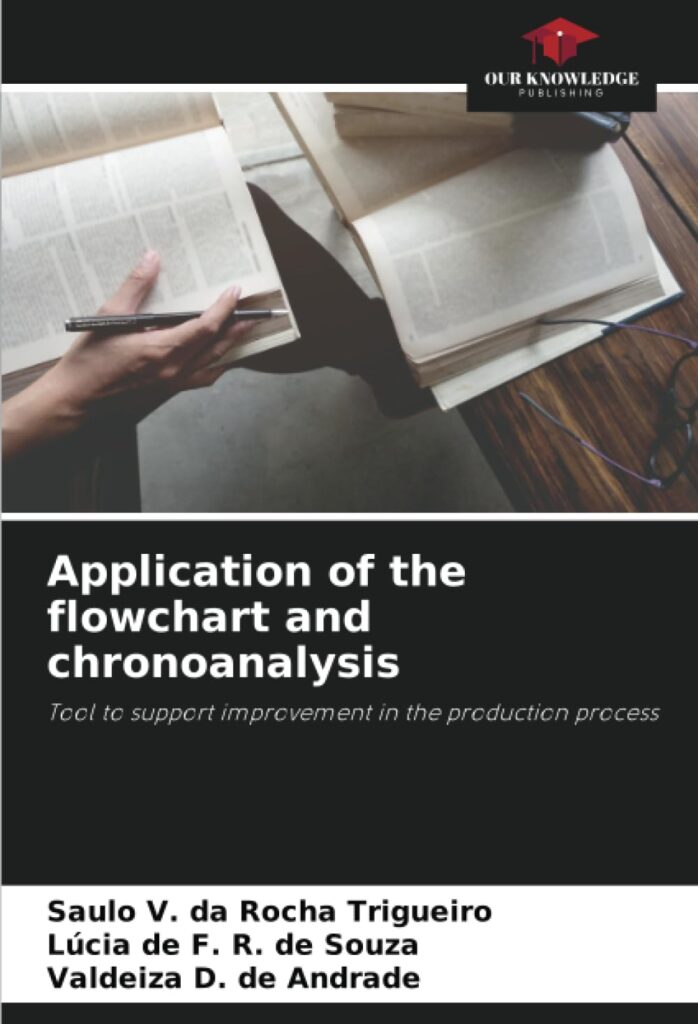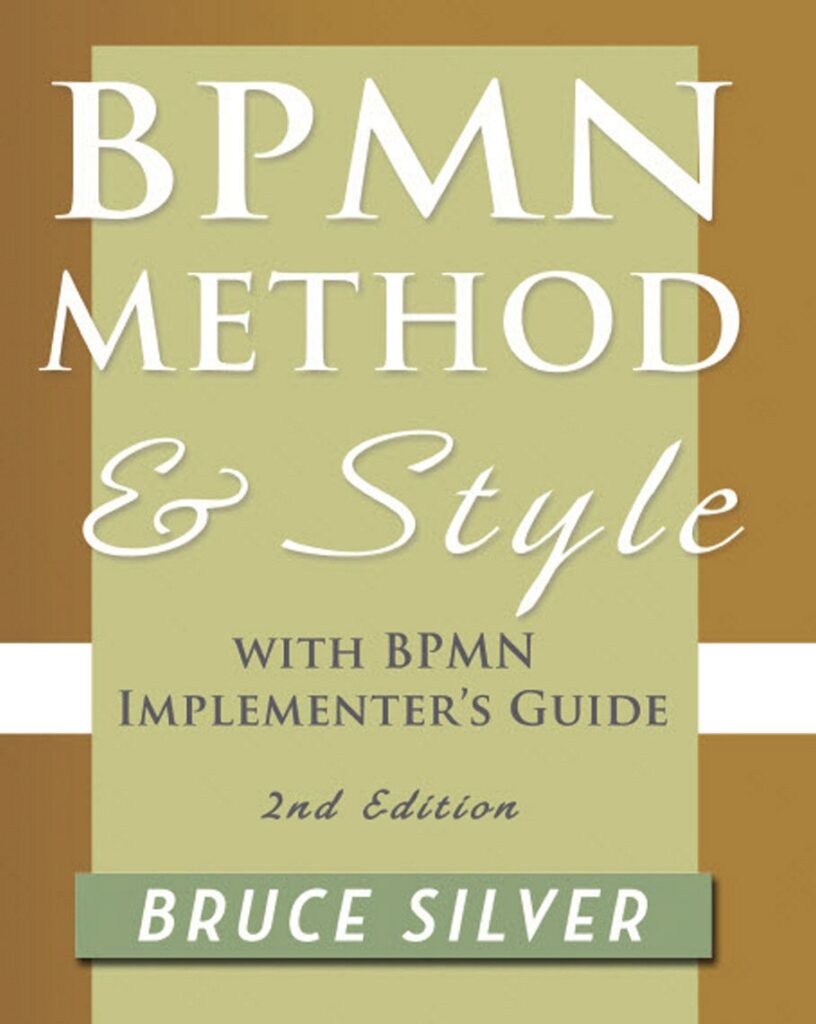
The Importance of Process Mapping and Modeling in Business Process Management
In the domain of Business Process Management (BPM), two critical components serve as the backbone for understanding and improving business operations: Process Mapping and Modeling. These two methods, though distinct, are complementary and essential for any organization aiming to refine its processes and achieve its business goals.
Process Mapping: The Art of Seeing the Big Picture
Process Mapping is the way of seeing the big picture of how things work in business. It involves the identification of all business processes within an organization without delving into the essentials details of workflows or stakeholder responsibilities. By taking on this macro view, we gain a comprehensive understanding of the primary and secondary processes driving the operational performance of a company. Think of Process Mapping as the foundation upon which we build our more detailed Process Models.
Process Modeling: Crafting the Blueprint of Business Processes
While mapping gives us the overview, Process Modeling is where we get our hands dirty. It’s the act of creating detailed representations—models—of business processes. These models are not just abstract concepts; they are structured tools that help visualize, analyze, and improve business operations.
Why is Process Modeling so crucial?
It bridges communication between staff and management by visualizing processes.
It uncovers areas for enhancement, pinpointing inefficiencies and bottlenecks.
It standardizes and documents processes, enhancing quality and service delivery consistency.
It enables the monitoring and control of processes, aligning them with business objectives.
The Five Steps to Effective Process Modeling
Defining the Scope: This is about setting the boundaries of the process to be modeled.
This initial step is characterized by understanding the process boundaries. By defining the scope, you are establishing what parts of the organization’s processes will be included in the model. This sets clear parameters, determining the start and end points, and ensures that the team’s efforts are focused and relevant. It also serves to prevent scope extrapolation where the modeling effort could unintentionally expand beyond its original intent.
Identifying Activities: Listing out the tasks and steps involved in the process
With the boundaries set, the next step is to enumerate all the specific actions and decisions that occur within those limits. This involves documenting every task, no matter how small, that contributes to the process. By identifying these activities, you create a comprehensive list that will form the backbone of the process model.
This is crucial for understanding how the process flows and for ensuring that no parts of the process are overlooked.
Assigning Responsibilities: Determining who does what within the process.
Once activities are listed, it’s necessary to attribute each task to a role within the organization. This step clarifies who is accountable for what, avoiding confusion and overlap in duties. Assigning responsibilities is about more than just naming the responsible party; it’s about ensuring that there is a clear understanding of the expectations for each position within the context of the process.
Creating a Process Flow Diagram: Using specialized software to visualize the process
This is where the visualization of the process takes shape. Using modeling software, the abstract list of tasks and responsibilities is transformed into a graphical depiction of the process flow. This diagram illustrates how activities are sequenced and interrelated and how information and materials move through the process. It’s a tool for all stakeholders to ‘see’ the process and comprehend how their part ties into the larger whole.
Conducting the ‘As-Is’ Analysis: Evaluating the current state of the process, identifying weaknesses, and suggesting improvements
Here, the current state of the process is critically examined, using the process flow diagram as a reference. The ‘As-Is’ analysis aims to understand the efficiency and effectiveness of the process as it currently functions. It involves detecting any redundancies, bottlenecks, or areas where resources are wasted.
Based on this analysis, recommendations can be made for improving the process, which may include removing unnecessary steps, reallocating resources, or reassigning responsibilities.
Modeling Languages
Languages like Flowcharts, BPMN, EPC, and UML are instrumental in this journey. They serve as the syntax and grammar that give form to our process stories, allowing us to communicate complex workflows simply and effectively.

Flowcharts
Flowcharts are a type of diagram that represent a process or algorithm, showing the steps as boxes of various kinds, and their order by connecting them with arrows. This schematic representation is now used widely across industries and sectors to map out actions and workflows in a process.
Origin
The concept of flowcharts is rooted in the early practices of documenting processes and sequences. However, the flowchart as we know it today was formalized by Frank Gilbreth in 1921 when he presented a flowchart of a process to the American Society of Mechanical Engineers (ASME). The objective was to use a visual tool to document the sequence of steps in a process — a method Gilbreth referred to as “Process Chart.” His idea was later refined and expanded by his peers, notably Allan H. Mogensen, who used them for process improvement and worker training.
Usage
Flowcharts have become an integral part of business process documentation, systems design, software engineering, and various other fields. Here are some of their common uses:
Process Documentation: Flowcharts provide a visual representation of the steps in a business process, making it easier to understand and communicate.
Problem-Solving: They help in diagnosing issues within a process by tracing the flow of operations.
Program Design: In software development, flowcharts are used to outline the logic before coding begins.
Quality Management: ISO standards often use flowcharts to describe processes for quality control.
Training and Onboarding: They can simplify complex processes for training new employees, providing a clear picture of what actions are required and when.
Importance
The significance of flowcharts lies in their ability to simplify the communication of complex processes, allowing for easier analysis and problem-solving. Key importance includes:
Clarity: Flowcharts provide a clear, visual understanding of the process for everyone involved.
Efficiency: Identifying redundancies and wastes in a process is much easier with a flowchart, allowing for more efficient operations.
Standardization: They help in establishing a standard procedure for a process, which is crucial for consistency and quality.
Communication: Flowcharts serve as an excellent tool for communicating processes to stakeholders, ensuring everyone is on the same page.
Flowcharts are not just tools for documenting a current process; they are also instrumental in planning future processes. They enable teams to work collaboratively on process improvement and help in aligning organizational processes with business objectives. As simple as they may appear, flowcharts are powerful tools for organizing thought and fostering a systematic approach to problem-solving.

Unified Modeling Language (UML)
Unified Modeling Language (UML) is a standardized modeling language that provides a way to visualize a system’s architectural blueprints in a way that is comprehensive and adaptable to various types of projects and technologies. UML is predominantly used in software engineering but has applications in other fields like business process modeling due to its versatility in representing complex systems.
Origin
UML was developed in the mid-1990s by Grady Booch, Ivar Jacobson, and James Rumbaugh at Rational Software. This initiative was a response to the need for a standardized way to visually document software architecture and design. The objective was to unify the best practices and methodologies of various systems and modeling languages that were prevalent at the time, hence the name Unified Modeling Language. The standard is currently managed by the Object Management Group (OMG).
How to use
UML is used across various stages of the software development lifecycle and beyond, including:
Requirement Analysis: Capturing system requirements in use case diagrams to understand the interactions between users and the system.
System Design: Visualizing system architecture with class diagrams, object diagrams, and more, to portray data structures and relationships.
Process Flows: Activity diagrams and state machine diagrams are used to model the flow of control or business processes.
Deployment: Deployment diagrams show the physical deployment of artifacts on nodes.
For business process modeling specifically, UML’s activity diagrams are quite popular. These diagrams are great for mapping out the workflow of a process or the sequence of events in business modeling scenarios. They help in depicting the flow from one activity to another within a system or process, making it clearer how components interact and where dependencies lie.
Importance
UML’s importance in the software development and business process community is substantial due to several factors:
Standardization: As a standardized language, UML helps in maintaining consistency across projects and industries, enabling easier communication and documentation.
Versatility: It can model almost any type of application, which makes it invaluable not just for developers but for business analysts and other stakeholders.
Complexity Management: UML can model complex systems incrementally and hierarchically, making it easier to break down and understand large systems.
Tool Support: Many tools support UML, which can generate code, perform reverse engineering, and provide other automation supports to streamline development processes.
In Business Processes
In the context of business processes, UML diagrams like activity diagrams and sequence diagrams play a crucial role. They help in visualizing the sequence of business activities and the flow of data through various business units. This visualization supports the analysis and redesign of workflows and is instrumental in improving process efficiency and productivity.
By enabling clear documentation and conceptualization, UML helps businesses in planning and executing strategic changes more effectively. It bridges the gap between the conceptual process design and practical implementation, ensuring that all stakeholders have a clear and common understanding of the system and its activities.

Event-driven Process Chain (EPC)
Event-driven Process Chain (EPC) is a flowchart-based diagram used for business process modeling. EPC can be used to visualize business processes and is particularly useful in designing and documenting complex workflows. This methodology is a part of the broader framework of business process management and plays a crucial role in the analysis and re-engineering of processes.
Origin
The Event-driven Process Chain (EPC) method was developed in the early 1990s by Professor August-Wilhelm Scheer at the University of Saarland, Germany. It was originally conceived as a fundamental part of the Architecture of Integrated Information Systems (ARIS) framework, which is aimed at optimizing business processes through an integrated view of IT, people, and operations.
Usage
EPC diagrams are particularly popular within organizations that use SAP for their enterprise resource planning (ERP) solutions, as EPC is integrated into SAP’s methodology for business process design. The primary elements of an EPC diagram include:
Events: They describe under what circumstances a function (or process step) should be executed, thus triggering the next event.
Functions: Represent activities or tasks in the business process that consume resources and time.
Logical Connectors: These include AND, OR, and XOR operators, which control process flow and decision-making within the process.
EPC is used extensively to document, design, and analyze business processes. The visual representation helps in identifying process variations and inefficiencies, making it easier for organizations to optimize their operations.
Importance
The importance of EPC in business process management stems from several key benefits:
Clarity in Process Visualization: EPC diagrams provide a clear and structured way of documenting business processes. This clarity is crucial for understanding and analyzing process flows and for training new employees.
Decision Support: The logical connectors in EPC diagrams help in mapping out decision points within a process, which is essential for automating processes and for decision support systems.
Integration of IT and Business: EPC facilitates the alignment of IT systems and business operations, a critical factor for successful ERP implementations. It helps in mapping out the requirements from a business perspective, which can then be translated into IT specifications.
Process Improvement: By making it easier to spot redundancies and inefficiencies, EPC supports continuous process improvement initiatives. Organizations can streamline workflows and enhance productivity based on insights derived from EPC models.
Overall, the Event-driven Process Chain method is a powerful tool for organizations aiming to achieve efficiency through streamlined operations and improved process clarity. Its role in facilitating better communication between business analysts, process managers, and IT developers is invaluable, especially in complex projects where understanding the interdependencies within processes is critical.

Business Process Model and Notation (BPMN)
Business Process Model and Notation (BPMN) is a standardized graphical notation that depicts the steps in a business process. BPMN provides a methodology for businesses to document processes in a way that is understandable by all relevant stakeholders, which can include business analysts, process participants, and technical developers.
Origin
BPMN was first developed by the Business Process Management Initiative (BPMI), which later merged with the Object Management Group (OMG) in 2005. The original goal of BPMN was to provide a notation that is readily understandable by all business users, from the business analysts who create the initial drafts of the processes, to the technical developers responsible for implementing the technology that will perform those processes, and finally, to the business people who will manage and monitor those processes.
Since its inception, several versions of BPMN have been released. The most current version, BPMN 2.0, was released in 2011, and it extended the notation to include more complex interactions such as choreographies and conversations between different participants.
Usage
BPMN is used across various industries for:
Process Mapping and Documentation: It provides a standardized method to document processes, making it easier to share and understand across the organization.
Process Design and Analysis: BPMN diagrams are used to design new processes or analyze and improve existing ones. They help identify bottlenecks, inefficiencies, and areas for improvement.
Business and IT Alignment: By providing a clear depiction of business processes, BPMN helps align the efforts of IT and business teams, ensuring that both are working towards the same goals and understand each other’s needs.
Process Automation: BPMN diagrams can be directly used by many business process management systems (BPMS) to automate processes. They include enough information to enable the configuration of process automation tools.
Importance
The importance of BPMN in business process management includes:
Standardization: BPMN provides a standardized method for diagramming process flows, which is essential for maintaining clarity and consistency across the organization.
Clarity and Communication: Its graphical notation is designed to be understandable by all stakeholders, enhancing communication and collaboration between different departments and technical levels.
Complexity Handling: BPMN is robust enough to handle complex process modeling which includes advanced scenarios like parallel flows, decision gateways, events, and more.
Versatility: It is applicable in various kinds of business processes, including technical and business workflows, which makes it a versatile tool for organizations.
BPMN’s widespread adoption speaks to its effectiveness as a bridge between the technical and business views of a process. It facilitates a better understanding, operational transparency, and efficient management of business processes, thereby enhancing organizational performance and agility. By standardizing the way in which processes are visualized, BPMN contributes to better design, execution, monitoring, and optimization of business processes.
Modeling Business Process: BPMN Language Tools and the Power of BPMS
Platforms for BPMN
The Business Process Model and Notation (BPMN) is the standard for representing business processes in a visual form, understood by all business stakeholders and technical developers. BPMN serves as a common language, bridging the gap between process design and implementation. When it comes to process modeling, using BPMN within modeling tools allows for the creation of detailed, standardized diagrams that represent the business activities in a clear and actionable format.
BPMN Modeling Tools
These tools provide the functionality to create, edit, and refine process models using the BPMN standard. Some popular examples include:
Signavio Process Manager: This tool offers intuitive BPMN diagramming, with the added benefits of process simulation and decision modeling.
Lucidchart: Known for its user-friendly interface, Lucidchart provides BPMN templates and collaboration features, making it suitable for teams.
Bizagi Modeler: A tool that is especially favored for its ease of use, allowing for rapid modeling and sharing of processes.
Camunda Modeler: This is a desktop application that allows users to design BPMN diagrams as well as DMN decision tables.
Many BPMN modeling tools are integrated within broader Business Process Management Systems (BPMS).
BPMS Tools
A BPMS is an advanced platform that goes beyond just modeling. It encompasses a suite of tools that manage the complete lifecycle of business processes. This includes:
Process Design: Where BPMN modeling tools are used to visualize the processes.
Process Execution: BPMS can execute the designed processes through business rules and workflows, often without the need for extensive coding.
Process Monitoring: They provide monitoring capabilities that track the performance of processes, often in real time, using various metrics.
Process Optimization: They include features for analyzing process data, identifying bottlenecks, and suggesting improvements.
Some BPMS tools are actually complete suites that offer end-to-end solutions, from process discovery and modeling to automation and monitoring. For example:
Appian: A platform that provides full BPM capabilities including design, execution, and analysis, all in one integrated environment.
Pegasystems: Known for its rule-based architecture and AI capabilities, it provides tools for business process automation and optimization.
IBM Blueworks Live: A cloud-based BPMS that allows for collaborative process design and offers real-time analytics.
In summary, BPMN modeling tools are essential for the design phase of the BPM lifecycle, providing the diagrams that serve as blueprints for processes. However, BPMS tools encompass the entire range of process management activities, offering not just design capabilities but also execution, monitoring, and optimization features. This comprehensive approach helps organizations not only visualize but also enact and continuously improve their business processes.
Fundamentals of Process Modeling: Broadening the Approach Beyond Examples
Process modeling is a method used to describe and analyze the flow of materials, information, and decisions within an organization. It’s a schematic representation that provides a powerful tool for understanding the full complexity of a process and identifying opportunities for improvement.
Example
Let’s draw a parallel with car modeling, which is the process of creating a detailed representation of a vehicle. Here’s how the concepts of process modeling translate into the context of car design and manufacturing:
Defining the Scope
In car modeling, this would involve deciding what type of vehicle is being designed. For example, are you creating a model for a family sedan, a sports car, or an electric vehicle? This sets the parameters for design elements like size, capacity, range, and features, ensuring that all subsequent work aligns with these initial decisions. In process modeling, defining the scope is similarly about setting the limits and focus of the process under review, ensuring that the modeling efforts are targeted and relevant to the organizational goals.
Identifying Activities
When designing a car, activities would include all tasks involved in bringing the car from conception to production: sketching, prototyping, testing, and manufacturing. Similarly, in process modeling, identifying activities means listing all the tasks that contribute to the completion of a process. Each activity is a step that needs to be detailed and understood, from the initiation of a workflow to its completion.
Assigning Responsibilities
In car manufacturing, different teams are responsible for various aspects of the car’s development. For instance, engineers might work on the engine, while designers focus on the car’s aesthetics. Assigning responsibilities ensures that everyone knows their role and how it contributes to the overall project. In the process of modeling, this would be analogous to designating who is responsible for each step in a business process, from approval to execution.
Creating a Process Flow Diagram
In car modeling, the equivalent would be the technical blueprints that show the design of the car, the assembly line flow, and how each part fits together. This visualization is crucial for understanding the build process and for troubleshooting design issues before they arise in production. In business process modeling, creating a diagram provides a similar visual representation, mapping out the sequence of tasks and showing how different elements of the process interact with each other.
Conducting the ‘As-Is’ Analysis
For car modeling, this might involve taking an existing car model and analyzing its performance, design, and production process to identify areas for improvement. This could lead to modifications that enhance efficiency, reduce costs, or improve quality. In process modeling, the ‘As-Is’ analysis is a critical examination of the current process, identifying inefficiencies and problem areas that could benefit from redesign or refinement.
In both car modeling and process modeling, the fundamental aim is to create an ideal, streamlined version of the product or process. It involves understanding the current state, envisioning a better state, and then figuring out the steps needed to get there. Both require a systematic approach to design, creativity in problem-solving, and a strong emphasis on efficiency and functionality.
Towards a Unified Understanding in Management
All management disciplines eventually intertwine with BPM. Whether it’s quality management, operations management, or any other area, the principles of Process Mapping and Modeling are fundamental in creating a cohesive and efficient organizational structure.
The Value Added for Professionals
Understanding and applying the principles of Process Mapping and Modeling adds remarkable value for professionals. It empowers you to make informed decisions, optimize workflows, and contribute significantly to the strategic goals of your organization.
In today’s competitive business landscape, proficiency in BPM is not just an asset; it’s a necessity. Investing in acquiring this expertise through BPM Fast Mode Courses is not merely educational expenditure; it’s a strategic career move that opens doors to new opportunities and enhances your capacity to drive meaningful change in any organization.
Final Thought
The journey through the intricacies of Process Mapping and Modeling can be complex, but it is undeniably rewarding. As you master these skills, you not only improve your professional repertoire but also become an integral part of your organization’s success story. So, are you ready to take the first step towards mastery with BPM Fast Mode Courses?
Are you ready to accelerate your career and become a catalyst for change within your organization? BPM Fast Mode Courses are your express lane to mastering Business Process Management. In these courses, you’ll not only learn the theory behind BPM but also how to apply it effectively in real-world scenarios. You’ll gain hands-on experience in process mapping and modeling, equipping you with the skills to streamline operations, enhance productivity, and drive strategic outcomes. Don’t miss the opportunity to empower yourself with the knowledge that can set you apart in the competitive business landscape.
Take the driver’s seat in your professional journey today. Enroll in BPM Fast Mode Courses and unlock the potential to not just participate in the business process discourse but to lead it. This is your chance to enhance your understanding, refine your skills, and become the BPM expert that organizations are searching for. Sign up now, and let’s put your career on the fast track to success with the comprehensive and cutting-edge education that BPM Fast Mode offers. Your future in business process excellence is just a click away!





I抎 should verify with you here. Which is not something I often do! I get pleasure from reading a post that can make individuals think. Additionally, thanks for permitting me to remark!
Thank you!
Thank you for your post. I really enjoyed reading it, especially because it addressed my issue. http://www.hairstylesvip.com It helped me a lot and I hope it will also help others.
Thanks a lot!